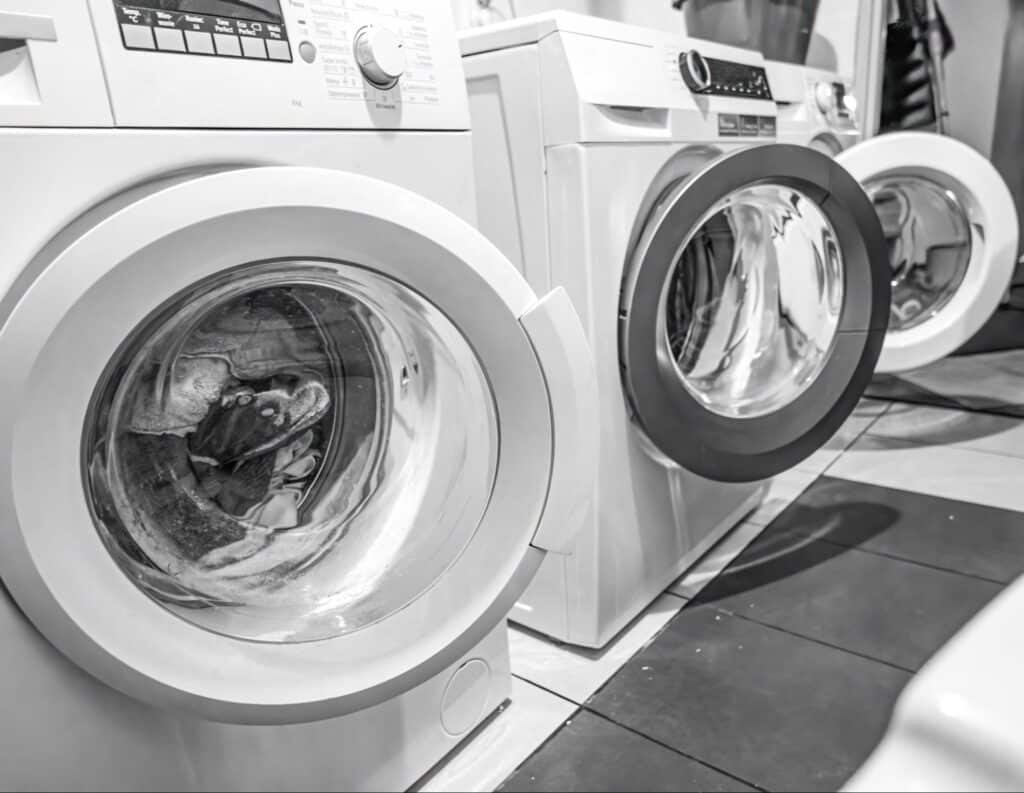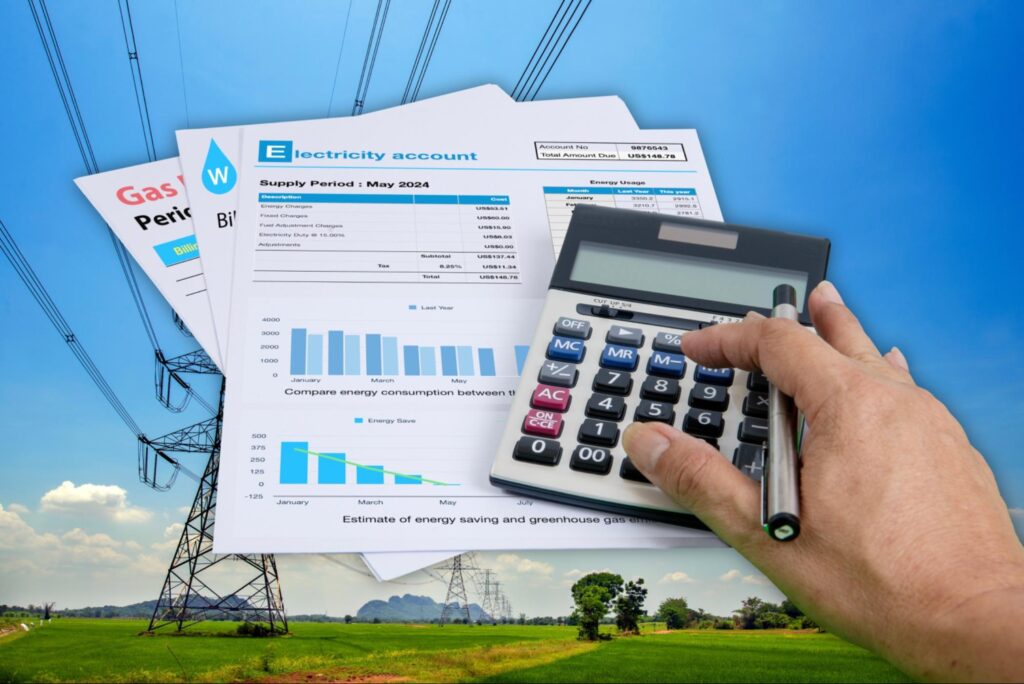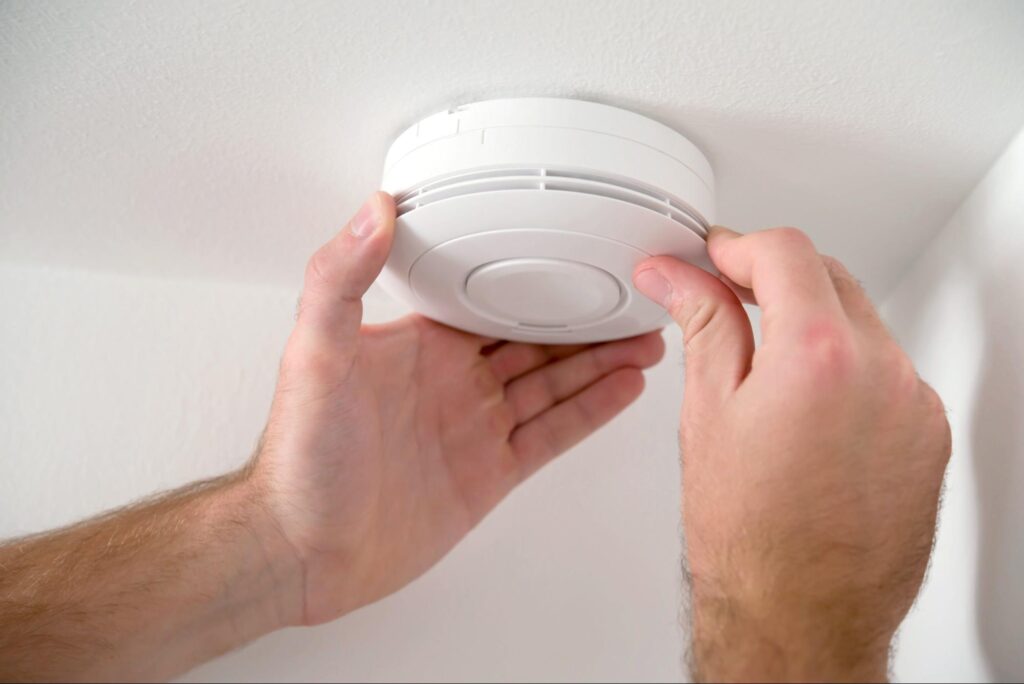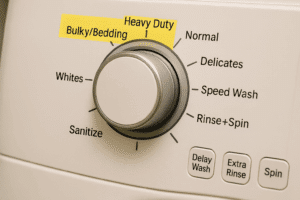Gas vs Electric Dryer: What’s Best for Your Laundry Setup?
When shopping for a new dryer, one major decision is choosing between gas vs electric dryer models. Both types will get your clothes dry, but they differ in installation needs, energy consumption, drying speed, cost, maintenance, safety, and environmental impact. Understanding these differences will help you decide which fits your Chicago home or business best. Let’s break down electric dryer vs gas dryer features to see how they compare.

Installation and Setup Requirements
Gas Dryer Installation: A gas clothes dryer machine requires a dedicated natural gas line (or propane hookup) and a standard 120-volt outlet for the controls. You’ll also need an external vent leading outdoors to safely exhaust combustion gases. If your home already has a gas supply and vent, installation is straightforward; otherwise, adding a new gas line can cost a few hundred dollars and must be done by a licensed professional for safety. Gas dryer setup tends to be more involved and expensive upfront due to these requirements.
Electric Dryer Installation: An electric dryer needs a 240-volt electrical outlet (most newer homes have one in the laundry area). Installation is typically simpler – often just plug-and-play if the outlet is in place. Like gas units, most electric dryers vent hot, moist air outside, though ventless electric models (with condenser or heat pump technology) are available for homes without external venting options. In general, installing an electric dryer is less costly and easier, especially in homes not already equipped for gas. If your Chicago apartment or condo lacks laundry hookups altogether, using a local self-service laundry facility or laundromat is a practical alternative to installing new connections.

Energy Use and Efficiency
Energy efficiency is a key factor in the electric vs gas dryer debate. Gas dryers heat up quickly and generally use less total energy per load because the gas flame produces intense heat fast. In fact, a typical gas dryer might use around 20–30% less energy per cycle than a comparable electric dryer. Shorter cycle times mean less energy spent drying each load. By contrast, electric dryers take a bit longer to reach high heat, which can increase the duration of each cycle. Standard electric heating elements may use more electricity overall, especially if running multiple loads back-to-back.
However, modern technology is closing the gap. High-efficiency electric models (particularly those with heat pump systems) can significantly cut energy usage by reusing heat from the drying process. These advanced electric dryers often rival or beat gas dryers in energy efficiency. The exact energy cost also depends on your local utility rates. Natural gas is often cheaper per unit of heat than electricity, so gas dryers have traditionally cost less to run. But electricity rates in some areas (including Chicago) can be affordable and more stable than gas prices. Always compare your local per-therm gas price and per-kilowatt-hour electric price. In some regions, an efficient electric dryer can be very competitive on energy use.
For a real-world example of cost: one expert analysis found that an energy-efficient electric dryer costs about $120–$130 per year to operate, whereas a similar gas dryer costs around $85 per year in fuel on average. Your mileage may vary, but gas typically edges out electricity in day-to-day energy savings if gas prices are low. Electric models with heat pumps, though, can erase much of this difference by using far less electricity than older units. Overall, if energy efficiency and operating cost are top priorities, gas is often efficient for frequent use, but the newest electric dryers aren’t far behind.
Drying Performance (Speed and Heat)
When it comes to drying performance, the general rule is: gas dryers run hotter and tumble clothes faster, while electric dryers are a bit slower to dry. A gas dryer’s burner ignites instantly and pumps out a lot of heat, so it can often dry a large load of towels or jeans more quickly than an electric model. This makes gas a great choice for busy laundromats or big households in a hurry, since faster drying means less waiting per load. If you’ve got endless piles of laundry, gas can save you time on each cycle.
Electric dryers, on the other hand, may take slightly longer to reach the same internal temperature. The heating element ramps up more gradually, which can extend the cycle by a few minutes. On the upside, many electric units offer more precise control over heat settings and can be gentler on fabrics. For delicate clothes or items that require low heat, electric dryers often have specialty cycles to prevent overdrying. Both gas and electric dryers today usually include moisture sensors and auto-dry features that stop the cycle once clothes are dry – so performance also depends on the model’s technology. In terms of pure drying speed for heavy loads, gas has a slight advantage. But for everyday laundry or specialty settings, an electric dryer will still get the job done effectively, just with a potentially longer cycle. Either way, your clothes will come out dry; it’s mostly a question of how fast and how hot each type operates.

Electric vs Gas Dryer Cost
Cost is often the deciding factor in the gas dryer vs electric dryer choice. There are two sides to consider: the upfront purchase/installation cost and the ongoing operating cost.
Upfront Purchase and Installation Cost
Gas dryers generally have a higher price tag initially. A new gas dryer typically costs about $50–$100 more than an equivalent electric model according to industry guides. This is because gas dryers include additional components (like burners and gas valves) that add to manufacturing cost. Besides the appliance cost, think about installation expenses: if your laundry area doesn’t already have a gas line and vent, setting those up will add to the bill. Hiring a plumber or HVAC professional to run a gas line can range from a few hundred dollars up to $1000 depending on your home’s layout. You’ll also need a vent installation through an exterior wall if one isn’t in place. All told, the initial investment for a gas dryer can be significantly higher if your home isn’t pre-fitted for it. In Chicago’s many vintage buildings, for example, installing new gas hookups in a condo might not even be practical, which could make electric the only viable choice.
Electric dryers have a lower upfront cost and fewer installation hurdles. The machines themselves are typically less expensive to buy, and if your space already has a 240V outlet (most single-family homes and newer apartments do), you’re nearly set. You may need an electrician only if you have to add a 240V outlet or upgrade your electrical panel for the dryer’s circuit. Venting for an electric dryer is the same as a gas dryer for standard models, but you also have the option of ventless electric dryers which avoid that requirement. Overall, for the purchase and setup phase, electric tends to be the budget-friendly option – especially in homes without existing gas infrastructure.
Operating and Energy Cost
After the initial spend, how much does each type cost to run month-to-month? As noted in the energy section, gas dryers usually cost less in utility bills when gas prices are reasonable. Gas units consume natural gas (measured in therms) plus a small amount of electricity to spin the drum and run controls. Electric dryers use only electricity (kilowatt-hours). If we break it down, an electric dryer might use roughly 4–6 kWh per load, whereas a gas dryer might use around 0.25–0.3 therms of gas for that same load. Depending on utility rates, the gas load could be a bit cheaper. Many people find that gas dryers save them on the order of $0.15–$0.30 per load compared to electric. Over a year, that might translate to $40–$60 in savings if usage is high.
However, these savings are not universal – they depend on energy prices. In some places, electricity is very cheap or gas is relatively expensive, tilting the numbers. For instance, if electric rates are low (or if you have solar panels offsetting your power use), an electric dryer’s operating cost could be on par with or better than gas. On the other hand, if natural gas is extremely affordable, gas dryers shine in cost per load. It’s wise to crunch the numbers with your local rates. Also consider your usage: a commercial laundry or a big family doing many loads a week stands to save more with a gas dryer’s efficiency, whereas a light user might barely notice the difference. And remember, extremely efficient electric models (like Energy Star heat pump dryers) use far less electricity than older ones, narrowing the cost gap further.
In summary, electric vs gas dryer cost comes down to paying more upfront for gas but potentially paying less over time on bills. If you have the budget and infrastructure, gas can be economical long-term. If you want the lowest initial cost or avoid complex installation, electric is the easier, budget-friendly choice. Many Chicago homeowners opt to stick with whatever hook-up is already present in their home to avoid high conversion costs. And if you’d rather not invest in any new appliance, you could always use a convenient wash-and-fold laundry service and skip the machine costs altogether.

Maintenance and Upkeep
Another consideration is the ongoing maintenance and upkeep each dryer type requires. In truth, both gas and electric dryers are relatively low-maintenance appliances, but gas models do have a few extra points to monitor. With any dryer, you’ll need to clean the lint filter after each cycle and periodically clear out the vent duct to prevent lint buildup (a major fire hazard if neglected). This basic maintenance is the same for both types. Additionally, check that the drum spins freely and listen for any unusual noises that might indicate a worn belt or motor issue.
Gas Dryer Maintenance: Gas dryers have burner assemblies and gas lines that should be kept in good condition. It’s wise to have a professional inspect your gas dryer (and its vent line) every year or two – they can clean out internal lint, verify the gas connections aren’t leaking, and ensure the burner ignites properly. Always keep the area around the dryer clear, and install a carbon monoxide detector near your laundry area as a safety precaution. If you notice a rotten egg smell (sign of a gas leak) or soot around the vent, stop using the dryer and have it serviced immediately. Generally, any repairs involving the gas burner or valve should be done by a trained technician. The good news is that gas dryer components are quite durable; with proper care, the appliance can last many years without major issues.
Electric Dryer Maintenance: Electric dryers are a bit simpler internally – no gas combustion means fewer components that need regular checking. Beyond the routine lint cleaning and occasional vent duct cleaning, electric dryers mostly require you to watch for electrical issues (like a frayed power cord or tripped circuit breaker). The heating element can burn out after many years, but it’s usually a straightforward replacement if it happens. Many homeowners feel comfortable doing minor fixes on electric dryers (such as replacing a drive belt or a thermostat) since there’s no gas line to worry about. Overall, electric units tend to need slightly less professional attention over their lifespan. Just keep them clean and don’t overload them, and they typically run smoothly. If you prefer to avoid appliance upkeep entirely, outsourcing your laundry chores to a service is an option – for example, busy families often use a pickup and delivery laundry service to save time on maintenance and drying tasks.
Safety Considerations
Both dryer types are safe to use when installed and used correctly, but there are some different safety considerations for gas vs electric. Gas dryers carry the additional responsibility of handling flammable gas and exhaust fumes. Proper installation is critical: the gas line connection must be secure to prevent leaks, and the dryer’s venting system must vent completely to the outdoors (no venting a gas dryer into an attic or indoor space, ever). A natural gas leak not only poses a fire/explosion risk but also can cause asphyxiation. That’s why, as mentioned, you should always have a carbon monoxide (CO) detector near a gas dryer and ensure the vent duct is unobstructed. If a gas dryer malfunctions or is improperly ventilated, carbon monoxide can build up in the home – something you’d never worry about with an electric dryer. For safety, gas appliances should be installed and serviced by licensed professionals. It’s also a good idea to periodically sniff around the gas valve area and listen for any hissing sounds; if you suspect a leak (smell that “rotten egg” odor added to natural gas), turn off the dryer, ventilate the area, and contact your gas utility immediately.
Electric dryers don’t produce carbon monoxide and don’t involve combustible gas, so in that sense they have fewer hazardous failure modes. There’s no risk of gas leaks. However, electric dryers still pose a general electrical safety risk if wiring is damaged – always plug the dryer into a proper 240V outlet (never use an extension cord) and ensure the cord and plug are in good condition. Both gas and electric units can potentially cause fires if lint accumulates excessively or if the motor overheats, so the standard precautions of cleaning and not overloading apply equally. Another safety tip for any dryer is to avoid running it when you’re not home or asleep, just as a best practice. In summary, gas dryers require vigilance about gas and fumes, whereas electric dryers mainly require standard electrical and fire safety awareness. As long as you follow installation guidelines and upkeep, both can be operated very safely in your home or business. If you’re ever unsure about dryer safety or notice an issue, don’t hesitate to call a professional for help.

Environmental Impact
Environmental impact is an increasingly important factor for eco-conscious consumers. Here the difference between gas and electric dryers comes down to energy sources and emissions. Gas dryers burn natural gas (a fossil fuel) to produce heat, which means they directly release carbon dioxide (and a bit of carbon monoxide) through the vent with each load. Any time you use a gas appliance, you’re using a non-renewable resource and contributing to greenhouse gas emissions on-site. Electric dryers, by contrast, don’t emit anything at the point of use – there’s no on-site combustion. However, generating the electricity they use may still produce emissions at the power plant depending on your region’s energy mix. In coal-heavy regions, an electric dryer’s “indirect” emissions could be significant. In cleaner grids (for example, Illinois gets a lot of power from nuclear and wind), running an electric dryer can be much greener. Crucially, electricity can increasingly come from renewable sources like solar, wind, or hydro. Natural gas will always have a carbon footprint, but electricity is getting cleaner as more renewables come online.
Because of this trend, many experts view electric dryers as the more sustainable choice long-term. In fact, ENERGY STAR’s highest efficiency ratings now exclude gas models, reflecting a shift toward electric appliances for a low-carbon future. The rationale is that even if a high-efficiency gas dryer uses less energy per load, it still locks you into burning gas for years to come. An electric dryer paired with a green energy supply (or a high-efficiency heat pump unit) can dry your clothes with dramatically lower carbon emissions overall. Some electric heat pump dryers can use 20–60% less energy than conventional dryers, further shrinking their environmental impact. Of course, any dryer uses a fair amount of energy, so the most eco-friendly approach is to dry responsibly: use sensor cycles to avoid over-drying, clean filters for efficiency, and air-dry clothes when feasible. But between the two dryer types, electric has the edge in environmental friendliness over the long haul as electricity generation gets greener. If minimizing your carbon footprint is a priority, choosing an electric dryer (especially an Energy Star or heat pump model) is the way to go.
Gas or Electric Dryer: Which Is Right for You?
Ultimately, the choice between a gas and electric dryer depends on your specific needs, situation, and values. If you already have a gas line hookup and do heavy volumes of laundry, a gas dryer can be a cost-effective, powerful workhorse – it will dry clothes faster and potentially save on energy bills, especially in a commercial setting or large household. Gas is a popular choice for many Chicago laundromats and commercial laundry services because it handles nonstop loads efficiently. On the other hand, if your home isn’t equipped for gas or you prefer a simpler installation with lower upfront cost, an electric dryer is a perfectly good solution. Electric models are easier to install and nowadays can be very efficient, particularly for small families or apartment living where ultra-fast drying isn’t critical. Environmentally, an electric dryer also gives you the opportunity to reduce carbon emissions by leveraging cleaner electricity over time.
Consider what matters most: Is it the initial budget, the monthly utility cost, drying speed, or environmental impact? Also factor in your laundry space – what hookups are available and what installation is realistic. In many cases, sticking with the dryer type your home is already set up for (gas or electric) will be the path of least resistance and cost. Both gas and electric dryers will serve you well if you choose a quality model and maintain it properly. There’s no one-size-fits-all answer, but by weighing installation, energy use, performance, cost, maintenance, safety, and green concerns as we’ve outlined, you can make an informed decision.
And if you ever decide that doing laundry at home isn’t worth the hassle, remember you have convenient options in Chicago. You can always let the professionals handle the drying for you with a pickup and delivery laundry service or drop-off service. Whether you go gas, electric, or no dryer at all, what matters is that you find the solution that keeps your laundry routine running smoothly. With the right choice in dryers (or laundry services), you’ll have fresh, clean clothes with minimal stress – and that’s a win for any household or business.






